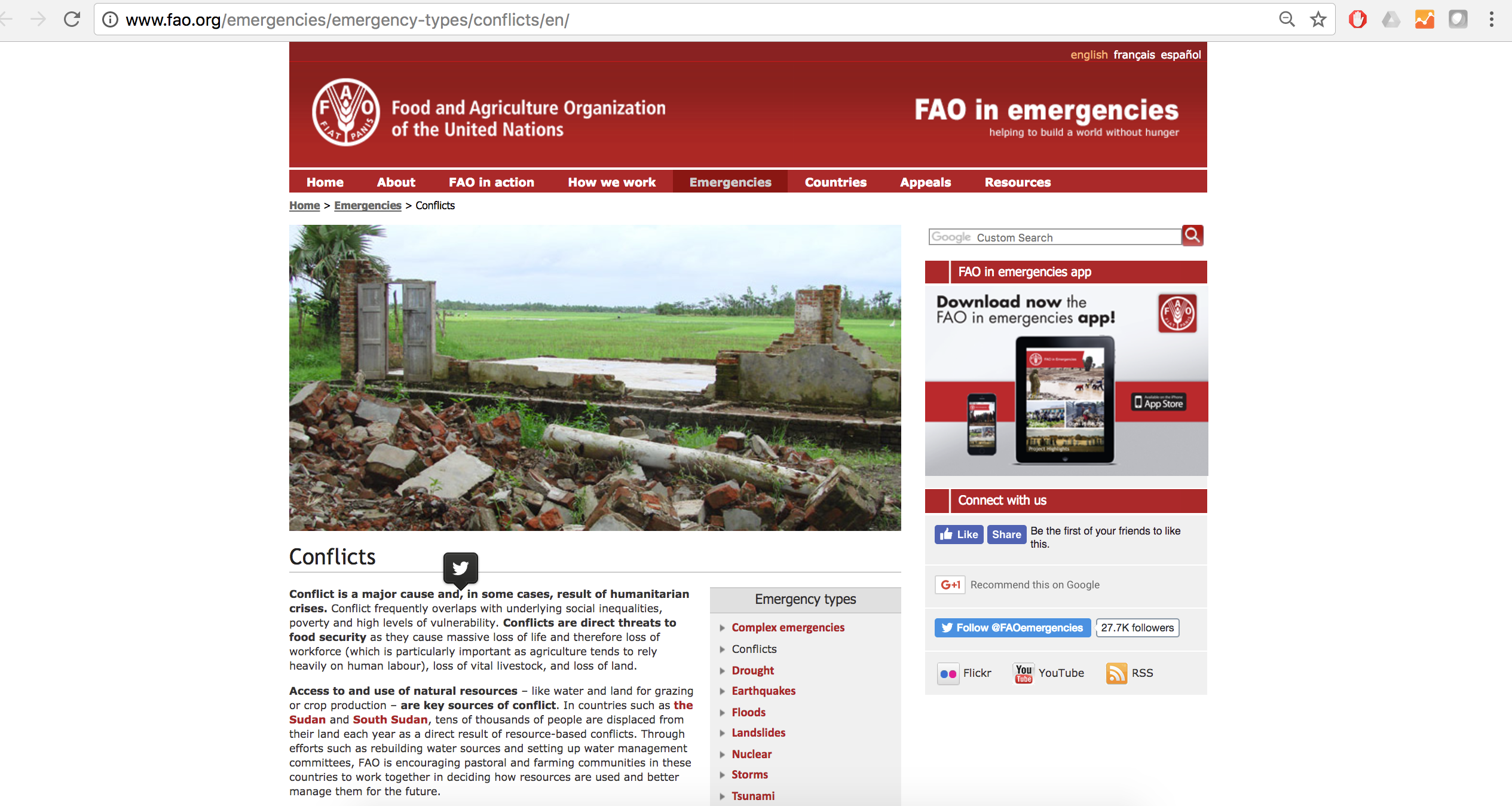Resource information
Conflict is a major cause and, in some cases, result of humanitarian crises. Conflict frequently overlaps with underlying social inequalities, poverty and high levels of vulnerability. Conflicts are direct threats to food security as they cause massive loss of life and therefore loss of workforce (which is particularly important as agriculture tends to rely heavily on human labour), loss of vital livestock, and loss of land.
Access to and use of natural resources – like water and land for grazing or crop production – are key sources of conflict. In countries such as the Sudan and South Sudan, tens of thousands of people are displaced from their land each year as a direct result of resource-based conflicts. Through efforts such as rebuilding water sources and setting up water management committees, FAO is encouraging pastoral and farming communities in these countries to work together in deciding how resources are used and better manage them for the future.


